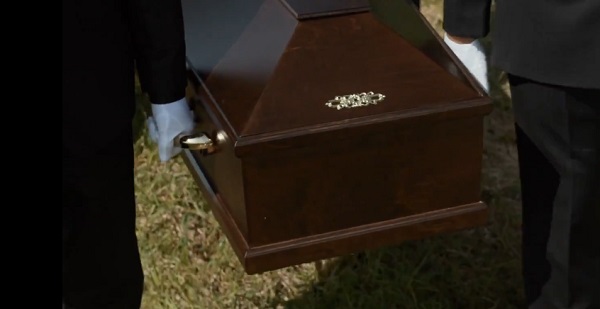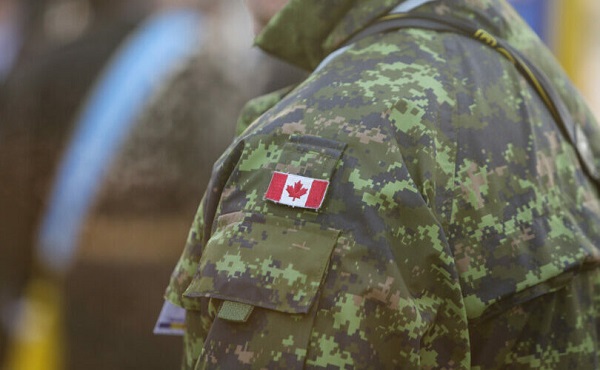Opinion
Success Of Canada’s Women Does Not Mean Men Failed

As usual, the Olympics delivered transcendent national moments for Canada.
It happens every Games. In 2010 the host city of Vancouver itself was the moment that provided a binding agent. In 1996 it was Donovan Bailey crushing the Americans on the track. In 1976 it was a lone high-jump silver medal by Greg Joy. This time in Tokyo it was Christine Sinclair & Co. (the women’s soccer team), a sprinter from Markham and a race walker from B.C. who remind Canadians of who they are, why they are, and how much reinforcement of a single nationality matters.

Except it rarely happens. Canada needs to win. Not all the time. Just enough to make the plucky challenger role thing work. Beating the U.S. in women’s soccer might be the ultimate underdog role that tells the 36 million chez nous that for all its horrific weather and language stress the Great White North is a good place to live.
Unfortunately the five percent who think they run modern Canada don’t count blessings they way they used to. A prime minister in a hurry to call an election during a pandemic— that he’s abetted— sees the roll of honour quite differently.
It’s now a diversity dance. In place of promoting unity while wearing the maple leaf the PM promotes separating Canadians by their Woke characteristics. Pitting segments of society to achieve peak tribal identity is his MO. In this Orwellian construct he’s fully backed by host broadcaster CBC, the rest of the bought media and labour leaders like Jerry Dias.
The laboured attempts to paint the Olympics as a political coming-out party was a hallmark of the CBC News Olympic features about Canada’s winners. When the Corp allowed its sports announcers like Steve Armitage, Mark Lee or Doug Dirks to call it straight you might be persuaded that it was your grandfather’s Olympics still.
Don’t be fooled. The PM who worships his brand of diversity (but practices otherwise) sees the Olympics as a blue-check exercise in drawing new lines between people who struggle at the best of times to find some unifying concept. (Just ask the CFL which adopted his “diversity” mantra but then was stiffed at its time of crisis by a government with loftier public goals to achieve alongside WE. )
According to Justin Trudeau Reality (taught by Gerry Butts) the final medal standings at the Tokyo Games should read something like this:
CDN. women athletes/ teams 19
Biopoc single athletes. 5
Muslim medal winners 1
LGBTQ (all nations) 182
Trans CDN athletes 1
Privileged white walkers 1
Gold medals for our Chinese friends 38
The loudest progressive braying will likely be about the preponderance of medals won by Canada’s (traditional) women athletes. Of the gold, silver and bronzes handed out to athletes (for them to put on themselves) women and teams of women garnered 19 medals.
It was a great show. From the first medal (Caileigh Filmer, Hillary Janssens for rowing) to the final gold (Kelsey Mitchell in cycling sprint) women did dominate the standings for Canadians. And beat the smug Americans in soccer. This led the usual suspects to gloat about how men couldn’t keep up/ were lacking moral fibre etc. Where would the nation be without the fruits of progressive feminism?
A few caveats here. In about half the nations in the world women are not allowed to compete at all or are severely hampered by religious doctrines or cannot get funding for the rigorous training needed to make an Olympic final. In short the talent pool that Canadian women swim in is clearly smaller by a large factor than that in which the male athletes compete.
So when you’re watching an Olympic final in rowing or cycling or wrestling the odds that a Canadian woman gets on the podium increase exponentially over what can be expected for a man. A good example is Kelsey Mitchell gold in pursuit. From RBC’s camps identifying her athletic talent to winning the gold was a stunning two years. It’s remarkable, but it’s also virtually impossible in a men’s competition.
It might also help the chances of Canadian men if so many elite athletes didn’t choose hockey as a sport. By the time many realize they won’t make the NHL it’s almost too late to get into a sport as late as Mithchell did.
Another factor aiding Canadian women continues to be the Title IX regulations governing American collegiate sport. U.S. schools have to offer an equal number of sports scholarships to women as to men. Often they cannot find enough elite athletes in some sports to fill out their quotas. (See the Felicity Huffman/ Lori Loughlin scandal )
And so Canadian women have flooded into the NCAA to receive elite training and competition. From swimming (Maggie MacNeil, Michigan) to basketball (Kia Nurse, Connecticut) to soccer (Christine Sinclair) many of Canada’s Olympians are honed outside the country thanks to evening the scholarships. Which solves the age-old dilemma of how to get Canadian sponsors to pony up for future Olympians.
The great question now as Trudeau tries to lock-in his concept of diversity is will the Canadian public finally accept the sporting version of his propaganda? Outside the plum events such as Olympics and world championships, the public has been reluctant to give up its traditional NHL and other team sports to root for women?
And how will it accept the new reality of trans athletes and gender fluidity? People tuning in for a sports event don’t react well when they find they’ve signed up for a BLM, CRT or Liberal Party lecture.
For now, enjoy. And don’t let any politician steal the glory of Canada’s Olympians.
Bruce Dowbiggin @dowbboy is the editor of Not The Public Broadcaster (http://www.notthepublicbroadcaster.com). The best-selling author of Cap In Hand is also a regular contributor to Sirius XM Canada Talks Ch. 167. A two-time winner of the Gemini Award as Canada’s top television sports broadcaster, his new book Personal Account with Tony Comper is now available on http://brucedowbigginbooks.ca/book-personalaccount.aspx
Education
Why classroom size isn’t the issue teacher unions think it is

This article supplied by Troy Media.
The real challenge is managing classrooms with wide-ranging student needs, from special education to language barriers
Teachers’ unions have long pushed for smaller class sizes, but the real challenge in schools isn’t how many students are in the room—it’s how complex those classrooms have become. A class with a high proportion of special needs students, a wide range of academic levels or several students learning English as a second language can be far more difficult to teach than a larger class
where students are functioning at a similar level.
Earlier this year, for example, the Elementary Teachers’ Federation of Ontario announced that smaller class sizes would be its top bargaining priority in this fall’s negotiations.
It’s not hard to see why unions want smaller classes. Teaching fewer students is generally easier than teaching more students, which reduces the workload of teachers. In addition, smaller classes require hiring more teachers, and this amounts to a significant financial gain for teachers’ unions. Each teacher pays union dues as part of membership.
However, there are good reasons to question the emphasis on class size. To begin with, reducing class size is prohibitively expensive. Teacher salaries make up the largest percentage of education spending, and hiring more teachers will significantly increase the amount of money spent on salaries.
Now, this money could be well spent if it led to a dramatic increase in student learning. But it likely wouldn’t. That’s because while research shows that smaller class sizes have a moderately beneficial impact on the academic performance of early years students, there is little evidence of a similar benefit for older students. Plus, to get a significant academic benefit, class sizes need to be reduced to 17 students or fewer, and this is simply not financially feasible.
In addition, not only does reducing class sizes mean spending more money on teacher compensation (including salaries, pensions and benefits), but it also leads to a decline in average teacher experience and qualifications, particularly during teacher shortages.
As a case in point, when the state of California implemented a K-3 class-size reduction program in 1996, inexperienced or uncertified teachers were hired to fill many of the new teaching positions. In the end, California spent a large amount of money for little measurable improvement in academic performance. Ontario, or any other province, would risk repeating California’s costly experience.
Besides, anyone with a reasonable amount of teaching experience knows that classroom complexity is a much more important issue than class size. Smaller classes with a high percentage of special needs students are considerably more difficult to teach than larger classes where students all function at a similar academic level.
The good news is that some teachers’ unions have shifted their focus from class size to classroom complexity. For example, during the recent labour dispute between the Saskatchewan Teachers’ Federation (STF) and the Saskatchewan government, the STF demanded that a classroom complexity article be included in the provincial collective agreement. After the dispute went to binding arbitration, the arbitrator agreed with the STF’s request.
Consequently, Saskatchewan’s new collective agreement states, among other things, that schools with 150 or more students will receive an additional full-time teacher who can be used to provide extra support to students with complex needs. This means that an extra 500 teachers will be hired across Saskatchewan.
While this is obviously a significant expenditure, it is considerably more affordable than arbitrarily reducing class sizes across the province. By making classroom complexity its primary focus, the STF has taken an important first step because the issue of classroom complexity isn’t going away.
Obviously, Saskatchewan’s new collective agreement is far from a panacea, because there is no guarantee that principals will make the most efficient use of these additional teachers.
Nevertheless, there are potential benefits that could come from this new collective agreement. By getting classroom complexity into the collective agreement, the STF has ensured that this issue will be on the table for the next round of bargaining. This could lead to policy changes that go beyond hiring a few additional teachers.
Specifically, it might be time to re-examine the wholesale adoption of placing most students, including those with special needs, in regular classrooms, since this policy is largely driving the increase in diverse student needs. While every child has the right to an education, there’s no need for this education to look the same for everyone. Although most students benefit from being part of regular academic classes, some students would learn better in a different setting that takes their individual needs into consideration.
Teachers across Canada should be grateful that the STF has taken a step in the right direction by moving beyond the simplistic demand for smaller class sizes by focusing instead on the more important issue of diverse student needs.
Michael Zwaagstra is a senior fellow with the Frontier Centre for Public Policy.
Troy Media empowers Canadian community news outlets by providing independent, insightful analysis and commentary. Our mission is to support local media in helping Canadians stay informed and engaged by delivering reliable content that strengthens community connections and deepens understanding across the country
Addictions
Canadian gov’t not stopping drug injection sites from being set up near schools, daycares

From LifeSiteNews
Canada’s health department told MPs there is not a minimum distance requirement between safe consumption sites and schools, daycares or playgrounds.
So-called “safe” drug injection sites do not require a minimum distance from schools, daycares, or even playgrounds, Health Canada has stated, and that has puzzled some MPs.
Canadian Health Minister Marjorie Michel recently told MPs that it was not up to the federal government to make rules around where drug use sites could be located.
“Health Canada does not set a minimum distance requirement between safe consumption sites and nearby locations such as schools, daycares or playgrounds,” the health department wrote in a submission to the House of Commons health committee.
“Nor does the department collect or maintain a comprehensive list of addresses for these facilities in Canada.”
Records show that there are 31 such “safe” injection sites allowed under the Controlled Drugs And Substances Act in six Canadian provinces. There are 13 are in Ontario, five each in Alberta, Quebec, and British Columbia, and two in Saskatchewan and one in Nova Scotia.
The department noted, as per Blacklock’s Reporter, that it considers the location of each site before approving it, including “expressions of community support or opposition.”
Michel had earlier told the committee that it was not her job to decide where such sites are located, saying, “This does not fall directly under my responsibility.”
Conservative MP Dan Mazier had asked for limits on where such “safe” injection drug sites would be placed, asking Michel in a recent committee meeting, “Do you personally review the applications before they’re approved?”
Michel said that “(a)pplications are reviewed by the department.”
Mazier stated, “Are you aware your department is approving supervised consumption sites next to daycares, schools and playgrounds?”
Michel said, “Supervised consumption sites were created to prevent overdose deaths.”
Mazier continued to press Michel, asking her how many “supervised consumption sites approved by your department are next to daycares.”
“I couldn’t tell you exactly how many,” Michel replied.
Mazier was mum on whether or not her department would commit to not approving such sites near schools, playgrounds, or daycares.
An injection site in Montreal, which opened in 2024, is located close to a kindergarten playground.
Conservative Party leader Pierre Poilievre has called such sites “drug dens” and has blasted them as not being “safe” and “disasters.”
Records show that the Liberal government has spent approximately $820 million from 2017 to 2022 on its Canadian Drugs and Substances Strategy. However, even Canada’s own Department of Health admitted in a 2023 report that the Liberals’ drug program only had “minimal” results.
Recently, LifeSiteNews reported that the British Columbia government decided to stop a so-called “safe supply” free drug program in light of a report revealing many of the hard drugs distributed via pharmacies were resold on the black market.
British Columbia Premier David Eby recently admitted that allowing the decriminalization of hard drugs in British Columbia via a federal pilot program was a mistake.
Former Prime Minister Justin Trudeau’s loose drug initiatives were deemed such a disaster in British Columbia that Eby’s government asked Trudeau to re-criminalize narcotic use in public spaces, a request that was granted.
Official figures show that overdoses went up during the decriminalization trial, with 3,313 deaths over 15 months, compared with 2,843 in the same time frame before drugs were temporarily legalized.
-

 armed forces2 days ago
armed forces2 days agoCanadian veteran says she knows at least 20 service members who were offered euthanasia
-

 Daily Caller2 days ago
Daily Caller2 days agoLaura Ingraham’s Viral Clash With Trump Prompts Her To Tell Real Reasons China Sends Students To US
-

 Frontier Centre for Public Policy1 day ago
Frontier Centre for Public Policy1 day agoRichmond Mayor Warns Property Owners That The Cowichan Case Puts Their Titles At Risk
-

 National2 days ago
National2 days agoConservative bill would increase penalties for attacks on places of worship in Canada
-

 Business1 day ago
Business1 day agoSluggish homebuilding will have far-reaching effects on Canada’s economy
-

 Business1 day ago
Business1 day agoMark Carney Seeks to Replace Fiscal Watchdog with Loyal Lapdog
-

 Alberta2 days ago
Alberta2 days agoHow economic corridors could shape a stronger Canadian future
-

 Censorship Industrial Complex18 hours ago
Censorship Industrial Complex18 hours agoEU’s “Democracy Shield” Centralizes Control Over Online Speech










